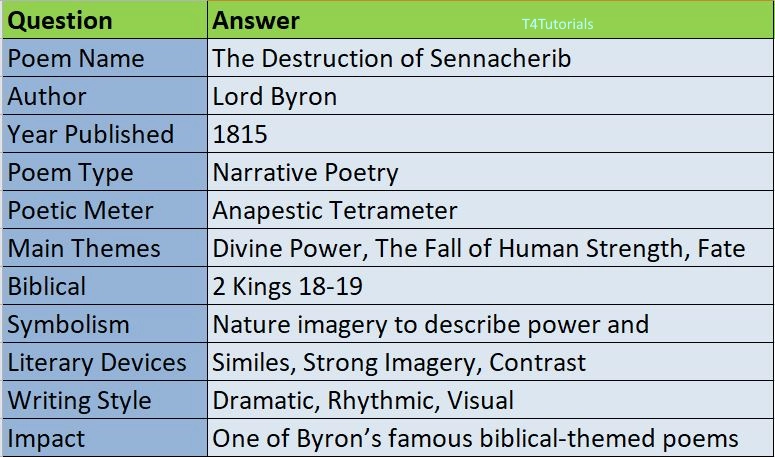Summary:
“The Destruction of Sennacherib” is a narrative poem by Lord Byron, first published in 1815. The poem is based on the biblical story from 2 Kings 18-19, which describes how the Assyrian King Sennacherib attacked Jerusalem but was miraculously defeated when an angel of God struck down his army overnight. Byron uses vivid imagery, strong rhythm, and powerful contrasts to depict the sudden downfall of the mighty Assyrian forces. The poem’s anapestic meter gives it a galloping rhythm, resembling the march of an army. Byron portrays the Assyrians as strong and confident, but they are unexpectedly defeated in a divine act of justice. The poem emphasizes the power of God, the temporary nature of human strength, and the mystery of divine intervention.
10
Score: 0
Attempted: 0/10
Subscribe
| Question | Answer |
| Poem Name | The Destruction of Sennacherib |
| Author | Lord Byron |
| Year Published | 1815 |
| Poem Type | Narrative Poetry |
| Poetic Meter | Anapestic Tetrameter |
| Main Themes | Divine Power, The Fall of Human Strength, Fate |
| Biblical Reference | 2 Kings 18-19 |
| Symbolism | Nature imagery to describe power and destruction |
| Literary Devices | Similes, Strong Imagery, Contrast |
| Writing Style | Dramatic, Rhythmic, Visual |
| Impact | One of Byron’s famous biblical-themed poems |